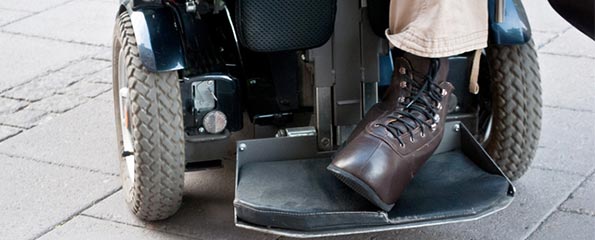This study will screen patients with cerebellar ataxia to check for antibodies that indicate allergy to gluten (wheat protein) and will study the effect of a gluten-free diet in patients with these antibodies. Patients with cerebellar ataxia have problems with coordination, resulting in “clumsiness” and unsteadiness of posture and walking.
Official Title
Open Label Controlled Trial of Gluten-Free Diet in Patients with Gluten-Sensitivity and Cerebellar Ataxia
Conditions
-Celiac Disease-Cerebellar Ataxia-Healthy
Study Type
Observational
Study Design
Natural History
Further Details
There are many known causes of cerebellar ataxia, but in many patients the cause is unknown and there are no available treatments. Cerebellar ataxia has been recognized as a complication of celiac disease, a syndrome characterized by sensitivity to gluten. Recognizing gluten sensitivity in patients with cerebellar ataxia would be important for two reasons: it would be one of the rare causes of the disease that are potentially treatable, and it would identify patients at risk for developing gastrointestinal cancers, particularly intestinal lymphoma. Patients with cerebellar ataxia of known or unknown cause and normal healthy volunteers of any age are eligible for this study.All participants will have a medical history, physical examination, blood drawn (30 milliliters, or 2 tablespoons) to check for celiac disease antibodies, and possibly other lab tests. This completes the participation of normal volunteers. All patients will have magnetic resonance imaging (MRI) of the brain. This diagnostic tool uses a strong magnetic field and radio waves instead of X-rays to show structural and chemical changes in tissues. During the scanning, the patient lies on a table in a narrow cylinder containing a magnetic field. He or she can speak with a staff member via an intercom system at all times during the procedure. Scanning times vary from 20 minutes to 2 hours. Patients who have celiac disease antibodies will have an upper gastrointestinal (GI) endoscopy intestinal biopsy. For this procedure, a flexible tube is inserted into the mouth and down the throat into the stomach and duodenum (the upper part of the small intestine), where a small tissue sample is taken for microscopic examination. Patients with these antibodies will be put on a gluten-free diet and will be followed at NIH every 3 months for 12 months. On the first visit, patients will have their ataxia evaluated using NINDS’s ataxia scale and will meet with a dietitian for instructions for a gluten-free diet. On the second through fifth visits (after 3, 6, 9 and 12 months, respectively, on the gluten-free diet), patients will have their ataxia evaluated, speak with a dietitian to assess their nutritional status, weight, and compliance with the diet, and provide a blood sample for celiac disease antibody testing. At the completion of the study, patients may choose to continue or stop the gluten-free diet. If the ataxia assessments show improvement, patients will be advised to continue the gluten-free diet permanently. In many patients with cerebellar ataxia, the etiology is unknown. Sensitivity to gluten (wheat protein) has been suggested as a cause for cerebellar ataxia even in the absence of malabsorption symptoms or intestinal pathology. However, the prevalence of gluten sensitivity in patients presenting with cerebellar ataxia is unknown and the effect of gluten-free diet on gluten sensitivity-associated cerebellar ataxia has not been systematically studied. The aim of this project is: 1) To identify gluten sensitive cerebellar ataxia patients attending the Human Motor Control Clinic at the NIH using tests for celiac disease antibodies as a screening method. 2) To conduct open-label controlled clinical trial to assess the efficacy of gluten-free diet in the patients identified using a detailed cerebellar ataxia scale as an objective clinical measure.
Study Start
Eligibility & Criteria
Genders Eligible for Study: Both Accepts Healthy VolunteersCriteria Patients with sporadic cerebellar ataxia of unknown etiology.CONTROL PATIENTS:Patients with genetically confirmed cerebellar ataxia (SCA1,2,3,6, and 7, Friedreich’s ataxia) or cerebellar ataxia due to known cause (e.g., cerebellar infarct, cerebellar degeneration secondary to alcohol abuse).AGE AND SEX-MATCHED NORMAL SUBJECTS:With no neurological or psychiatric disease and no medical or family history of celiac disease.
Total Enrolment
150
Contact Details
[1] National Institute of Neurological Disorders and Stroke (NINDS)All content and media on the HealthEngine Blog is created and published online for informational purposes only. It is not intended to be a substitute for professional medical advice and should not be relied on as health or personal advice. Always seek the guidance of your doctor or other qualified health professional with any questions you may have regarding your health or a medical condition. Never disregard the advice of a medical professional, or delay in seeking it because of something you have read on this Website. If you think you may have a medical emergency, call your doctor, go to the nearest hospital emergency department, or call the emergency services immediately.







